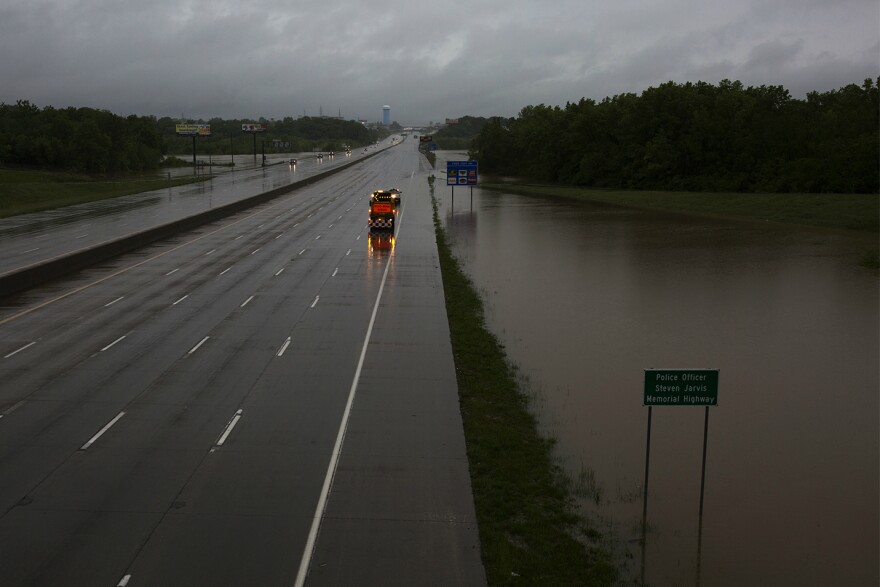Engineers at Missouri University of Science & Technology in Rolla are developing algorithms that could provide early warnings for motorists about flooded roads.
The system could warn drivers to stay off flooded roads. Researchers began the yearlong project to use artificial intelligence to enhance flood evacuation plans in February for transportation agencies in the Midwest, including the Missouri Department of Transportation. The work focuses on the Meramec River basin in eastern Missouri and the areas of Nebraska and northwest Missouri that experienced record-breaking floods in late March from the Missouri River.
Artificial intelligence could help deliver that information to motorists faster so to prevent people from being stranded on flooded roads, said Suzanna Long, the chair of engineering management and systems engineering at Missouri S&T.
“What we would be able to do is determine how far down the roadway do we need to start this rerouting to make sure no one’s sitting trapped on a roadway,” Long said.
Long and her colleagues are feeding their algorithms data on water levels since 1993 from the Missouri and Meramec rivers. They’re using a form of artificial intelligence called deep learning, in which computers imitates the human brain’s ability to process information to make decisions.
Some countries have recently started to use artificial intelligence to improve disaster-related warning systems. Google used it last year to predict flooding and send alerts to civilians in India.
The Missouri S&T project is funded by a $124,000 grant from MoDOT and the Mid-America Transportation Center, a U.S. Department of Transportation initiative at the University of Nebraska-Lincoln. While the research could help rural and urban communities, providing timely flood warnings in rural areas could still be extremely difficult, said Christopher Engelbrecht, the emergency management liaison at MoDOT.
A challenging part of the project will be figuring out how to deliver the information from the forecasting tools quickly enough to motorists using, for example, a GPS device, Engelbrecht said.
“We definitely want this in a form that we don’t have people as they’re driving looking at their phones, trying to find information if they’re already tied in on a map that’s already routing them somewhere,” he said.
The algorithms developed by Missouri S&T engineers could potentially be useful for determining evacuation routes for tornadoes, earthquakes and other natural disasters.
Follow Eli on Twitter: @StoriesByEli
Send questions and comments about this story to feedback@stlpublicradio.org




